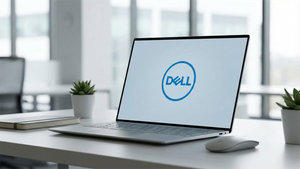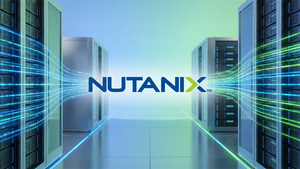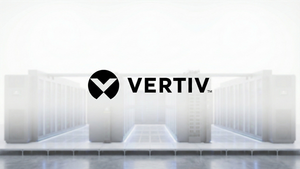
The relentless march of artificial intelligence, particularly the burgeoning complexity of large language models and advanced machine learning algorithms, is creating an unprecedented and insatiable hunger for data. This voracious demand is not merely a fleeting trend but is igniting what industry experts are calling a "decade-long supercycle" in the memory chip market. This structural shift is fundamentally reshaping the semiconductor landscape, driving an explosion in demand for specialized memory chips, escalating prices, and compelling aggressive strategic investments across the globe. As of October 2025, the consensus within the tech industry is clear: this is a sustained boom, poised to redefine growth trajectories for years to come.
This supercycle signifies a departure from typical, shorter market fluctuations, pointing instead to a prolonged period where demand consistently outstrips supply. Memory, once considered a commodity, has now become a critical bottleneck and an indispensable enabler for the next generation of AI systems. The sheer volume of data requiring processing at unprecedented speeds is elevating memory to a strategic imperative, with profound implications for every player in the AI ecosystem.
The Technical Core: Specialized Memory Fuels AI's Ascent
The current AI-driven supercycle is characterized by an exploding demand for specific, high-performance memory technologies, pushing the boundaries of what's technically possible. At the forefront of this transformation is High-Bandwidth Memory (HBM), a specialized form of Dynamic Random-Access Memory (DRAM) engineered for ultra-fast data processing with minimal power consumption. HBM achieves this by vertically stacking multiple memory chips, drastically reducing data travel distance and latency while significantly boosting transfer speeds. This technology is absolutely crucial for the AI accelerators and Graphics Processing Units (GPUs) that power modern AI, particularly those from market leaders like NVIDIA (NASDAQ: NVDA). The HBM market alone is experiencing exponential growth, projected to soar from approximately $18 billion in 2024 to about $35 billion in 2025, and potentially reaching $100 billion by 2030, with an anticipated annual growth rate of 30% through the end of the decade. Furthermore, the emergence of customized HBM products, tailored to specific AI model architectures and workloads, is expected to become a multibillion-dollar market in its own right by 2030.
Beyond HBM, general-purpose Dynamic Random-Access Memory (DRAM) is also experiencing a significant surge. This is partly attributed to the large-scale data centers built between 2017 and 2018 now requiring server replacements, which inherently demand substantial amounts of general-purpose DRAM. Analysts are widely predicting a broader "DRAM supercycle" with demand expected to skyrocket. Similarly, demand for NAND Flash memory, especially Enterprise Solid-State Drives (eSSDs) used in servers, is surging, with forecasts indicating that nearly half of global NAND demand could originate from the AI sector by 2029.
This shift marks a significant departure from previous approaches, where general-purpose memory often sufficed. The technical specifications of AI workloads – massive parallel processing, enormous datasets, and the need for ultra-low latency – necessitate memory solutions that are not just faster but fundamentally architected differently. Initial reactions from the AI research community and industry experts underscore the criticality of these memory advancements; without them, the computational power of leading-edge AI processors would be severely bottlenecked, hindering further breakthroughs in areas like generative AI, autonomous systems, and advanced scientific computing. Emerging memory technologies for neuromorphic computing, including STT-MRAMs, SOT-MRAMs, ReRAMs, CB-RAMs, and PCMs, are also under intense development, poised to meet future AI demands that will push beyond current paradigms.
Corporate Beneficiaries and Competitive Realignment
The AI-driven memory supercycle is creating clear winners and losers, profoundly affecting AI companies, tech giants, and startups alike. South Korean chipmakers, particularly Samsung Electronics (KRX: 005930) and SK Hynix (KRX: 000660), are positioned as prime beneficiaries. Both companies have reported significant surges in orders and profits, directly fueled by the robust demand for high-performance memory. SK Hynix is expected to maintain a leading position in the HBM market, leveraging its early investments and technological prowess. Samsung, while intensifying its efforts to catch up in HBM, is also strategically securing foundry contracts for AI processors from major players like IBM (NYSE: IBM) and Tesla (NASDAQ: TSLA), diversifying its revenue streams within the AI hardware ecosystem. Micron Technology (NASDAQ: MU) is another key player demonstrating strong performance, largely due to its concentrated focus on HBM and advanced DRAM solutions for AI applications.
The competitive implications for major AI labs and tech companies are substantial. Access to cutting-edge memory, especially HBM, is becoming a strategic differentiator, directly impacting the ability to train larger, more complex AI models and deploy high-performance inference systems. Companies with strong partnerships or in-house memory development capabilities will hold a significant advantage. This intense demand is also driving consolidation and strategic alliances within the supply chain, as companies seek to secure their memory allocations. The potential disruption to existing products or services is evident; older AI hardware configurations that rely on less advanced memory will struggle to compete with the speed and efficiency offered by systems equipped with the latest HBM and specialized DRAM.
Market positioning is increasingly defined by memory supply chain resilience and technological leadership in memory innovation. Companies that can consistently deliver advanced memory solutions, often customized to specific AI workloads, will gain strategic advantages. This extends beyond memory manufacturers to the AI developers themselves, who are now more keenly aware of memory architecture as a critical factor in their model performance and cost efficiency. The race is on not just to develop faster chips, but to integrate memory seamlessly into the overall AI system design, creating optimized hardware-software stacks that unlock new levels of AI capability.
Broader Significance and Historical Context
This memory supercycle fits squarely into the broader AI landscape as a foundational enabler for the next wave of innovation. It underscores that AI's advancements are not solely about algorithms and software but are deeply intertwined with the underlying hardware infrastructure. The sheer scale of data required for training and deploying AI models—from petabytes for large language models to exabytes for future multimodal AI—makes memory a critical component, akin to the processing power of GPUs. This trend is exacerbating existing concerns around energy consumption, as more powerful memory and processing units naturally draw more power, necessitating innovations in cooling and energy efficiency across data centers globally.
The impacts are far-reaching. Beyond data centers, AI's influence is extending into consumer electronics, with expectations of a major refresh cycle driven by AI-enabled upgrades in smartphones, PCs, and edge devices that will require more sophisticated on-device memory. This supercycle can be compared to previous AI milestones, such as the rise of deep learning and the explosion of GPU computing. Just as GPUs became indispensable for parallel processing, specialized memory is now becoming equally vital for data throughput. It highlights a recurring theme in technological progress: as one bottleneck is overcome, another emerges, driving further innovation in adjacent fields. The current situation with memory is a clear example of this dynamic at play.
Potential concerns include the risk of exacerbating the digital divide if access to these high-performance, increasingly expensive memory resources becomes concentrated among a few dominant players. Geopolitical risks also loom, given the concentration of advanced memory manufacturing in a few key regions. The industry must navigate these challenges while continuing to innovate.
Future Developments and Expert Predictions
The trajectory of the AI memory supercycle points to several key near-term and long-term developments. In the near term, we can expect continued aggressive capacity expansion and strategic long-term ordering from major semiconductor firms. Instead of hasty production increases, the industry is focusing on sustained, long-term investments, with global enterprises projected to spend over $300 billion on AI platforms between 2025 and 2028. This will drive further research and development into next-generation HBM (e.g., HBM4 and beyond) and other specialized memory types, focusing on even higher bandwidth, lower power consumption, and greater integration with AI accelerators.
On the horizon, potential applications and use cases are vast. The availability of faster, more efficient memory will unlock new possibilities in real-time AI processing, enabling more sophisticated autonomous vehicles, advanced robotics, personalized medicine, and truly immersive virtual and augmented reality experiences. Edge AI, where processing occurs closer to the data source, will also benefit immensely, allowing for more intelligent and responsive devices without constant cloud connectivity. Challenges that need to be addressed include managing the escalating power demands of these systems, overcoming manufacturing complexities for increasingly dense and stacked memory architectures, and ensuring a resilient global supply chain amidst geopolitical uncertainties.
Experts predict that the drive for memory innovation will lead to entirely new memory paradigms, potentially moving beyond traditional DRAM and NAND. Neuromorphic computing, which seeks to mimic the human brain's structure, will necessitate memory solutions that are tightly integrated with processing units, blurring the lines between memory and compute. Morgan Stanley, among others, predicts the cycle's peak around 2027, but emphasizes its structural, long-term nature. The global AI memory chip design market, estimated at USD 110 billion in 2024, is projected to reach an astounding USD 1,248.8 billion by 2034, reflecting a compound annual growth rate (CAGR) of 27.50%. This unprecedented growth underscores the enduring impact of AI on the memory sector.
Comprehensive Wrap-Up and Outlook
In summary, AI's insatiable demand for data has unequivocally ignited a "decade-long supercycle" in the memory chip market, marking a pivotal moment in the history of both artificial intelligence and the semiconductor industry. Key takeaways include the critical role of specialized memory like HBM, DRAM, and NAND in enabling advanced AI, the profound financial and strategic benefits for leading memory manufacturers like Samsung Electronics, SK Hynix, and Micron Technology, and the broader implications for technological progress and competitive dynamics across the tech landscape.
This development's significance in AI history cannot be overstated. It highlights that the future of AI is not just about software breakthroughs but is deeply dependent on the underlying hardware infrastructure's ability to handle ever-increasing data volumes and processing speeds. The memory supercycle is a testament to the symbiotic relationship between AI and semiconductor innovation, where advancements in one fuel the demands and capabilities of the other.
Looking ahead, the long-term impact will see continued investment in R&D, leading to more integrated and energy-efficient memory solutions. The competitive landscape will likely intensify, with a greater focus on customization and supply chain resilience. What to watch for in the coming weeks and months includes further announcements on manufacturing capacity expansions, strategic partnerships between AI developers and memory providers, and the evolution of pricing trends as the market adapts to this sustained high demand. The memory chip market is no longer just a cyclical industry; it is now a fundamental pillar supporting the exponential growth of artificial intelligence.
This content is intended for informational purposes only and represents analysis of current AI developments.
TokenRing AI delivers enterprise-grade solutions for multi-agent AI workflow orchestration, AI-powered development tools, and seamless remote collaboration platforms. For more information, visit https://www.tokenring.ai/.





